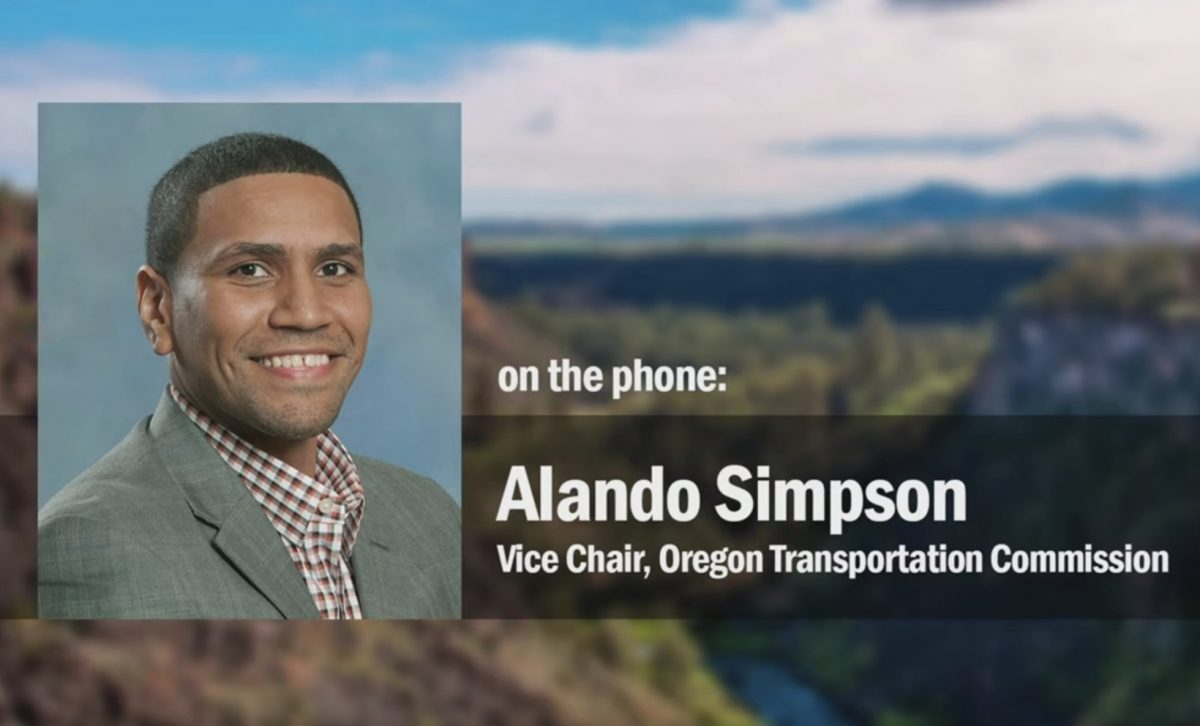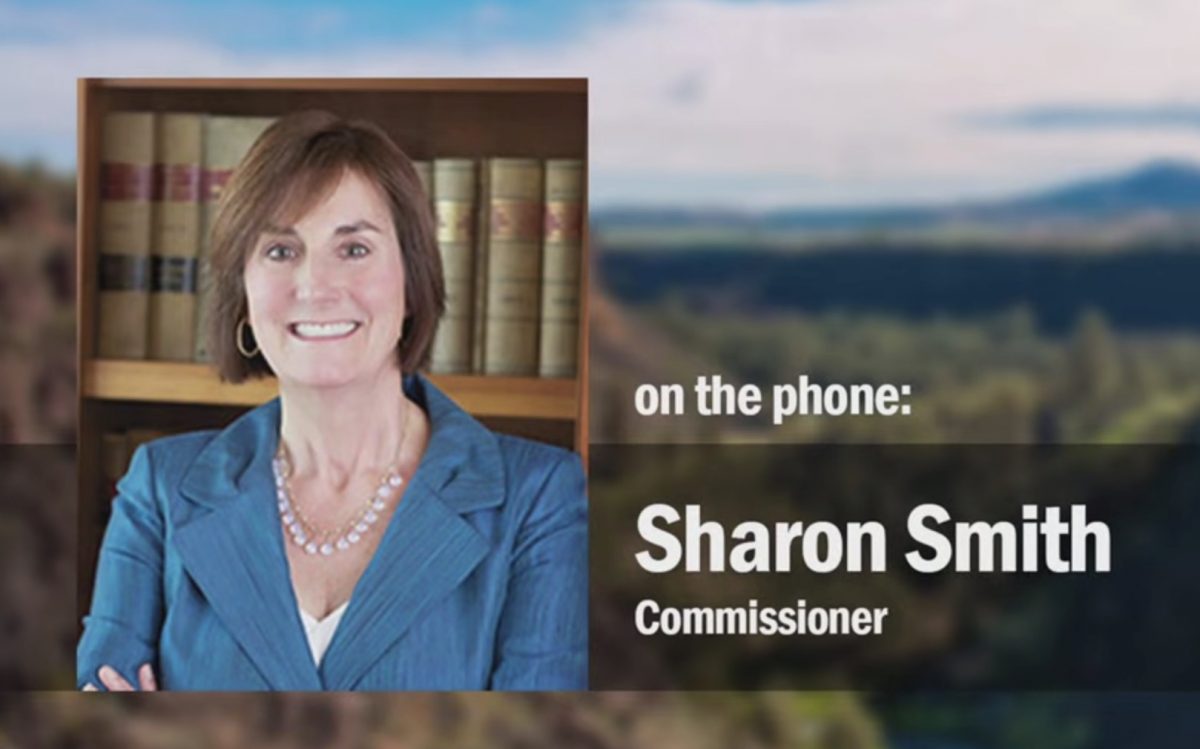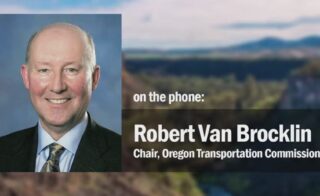The oversight body for the Oregon Department of Transportation has given the agency permission to move forward on their $715 million I-5 Rose Quarter project without doing more rigorous and independent analysis of its environmental and community impacts.
In a 5-0 vote taken on a meeting held over the phone today, Oregon Transportation Commission Chair Robert Van Brocklin said he was satisfied with steps taken by ODOT thus far and that, “I just don’t find the basis in the record to change to an EIS [Environmental Impact Statement].”
At issue was whether ODOT should be required to perform an EIS or stick with their already completed Environmental Assessment. Both processes are part of the US Federal Highway Administration National Environmental Policy Act (NEPA). ODOT completed an EA last February, a step required to determine whether or not a project will have significant impacts.
With their vote today, the OTC has swept aside serious concerns and calls for an EIS by many regional elected leaders and organizations, and thousands of Portlanders who oppose the project. In the past two weeks alone, the group No More Freeways says over 350 people submitted public comment calling for an EIS. Last spring a comment period led to over 2,000 public omments, 89% of which were in opposition to the project.
Among the organizations and elected officials that have called for an EIS include: Portland Public Schools Board, Albina Vision, Metro President Lynn Peterson, Multnomah County Commissioner Jessica Vega Pederson, Oregon House Speaker Tina Kotek, Portland Commissioner Chloe Eudaly, Portland Mayor Ted Wheeler, and others.
The City of Portland is technically a partner on the project. But their own agencies and advisory committees oppose it. The Portland Parks and Recreation Bureau announced in late February they would not sign off on a key “letter of concurrence” for the project because of its significant impacts to the Eastbank Esplanade. And the Portland Bureau of Transportation’s own Bureau Budget Advisory Committee has called for an EIS, as has PBOT’s Bicycle Advisory Committee and Pedestrian Advisory Committee.
Advertisement
None of these calls for an EIS were mentioned in the meeting today. And no one gave any voice to the thousands of comments logged in opposition to the project.
“We’re not going to get any more information from an EIS that we got with the EA. We need to move this project forward.”
— Martin Callery, OTC
As OTC commissioners lobbed softball questions to ODOT staff, activists flooded a chat window adjacent to the YouTube livestream. They pointed out oversights in OTC members’ comments and expressed exasperation at the outcome. “ODOT has been lying and hiding the true impacts according to their own surface level research. They have misled legislators, local officials, and the public, knowingly, without censure,” wrote one person. And as commissioners and ODOT staff discussed how the project would relieve congestion, Portland mayoral candidate Sarah Iannarone typed, “The committee members seem unfamiliar with the concept of induced demand. Freeeway expansion will not reduce the bottlenecks about which they seem so concerned.”
ODOT’s job at this meeting (and for the past several months) has been to convince the community, elected officials and most important OTC members, that they hear concerns and are doing things to address them: They’ve hired more staff and consultants and have set up new advisory committees. Brendan Finn, ODOT’s head of the new Urban Mobility Office & Mega Project Delivery told commissioners his team is pushing forward on a plan to allow bus operators to use the expanded shoulders proposed in the project. “This will be an effective strategy to reduce greenhouse gas emissions,” he testified.
There’s a lot at stake for ODOT on this issue. They warned the OTC earlier this year that doing an EIS would lead to a three year delay and could add as much as $86 million in inflationary costs to the project.
To demonstrate that they are working closely with the community ODOT brought a special guest to the meeting (it wasn’t open to public testimony). Dr. Steven Holt is a pastor who grew up in the Albina neighborhood and now advises the city through positions on a Portland Housing Bureau oversight committee and the newly established I-5 Rose Quarter Project Executive Advisory Committee. Finn said Holt was brought in to lead their work on community collaboration. “We have an opportunity to do something restorative,” Holt testified today. “We can’t ignore the devastation of the community and with this opportunity we can do something phenomenal. To be in this seat is a massive thrill for me.”
Advertisement




In discussion prior to voting, Chair Van Brocklin, a partner in the law firm of Stoel Rives LLP, reminded listeners that, in his estimation, the OTC doesn’t have the power to stop this project because it was included as an earmark in House Bill 2017 that was passed by the Oregon Legislature and signed into law by Oregon Governor Brown. “Some of the comments I’ve read from the public have suggested that we’re deciding whether or not to build this project,” Van Brocklin said. “That decision was made in 2017 by putting it in the bill and directing its construction.”
As chair of an ostensibly independent oversight committee, Van Brocklin didn’t ask one difficult question of ODOT the entire meeting and it was clear he wouldn’t vote for the EIS.
Commissioner Martin Callery, a retired executive for the Port of Coos Bay, said he simply doesn’t think an EIS is necessary. “We’ve already made a commitment to look at sound issues and air quality issues as a separate component… We’re not going to get any more information from an EIS that we got with the EA. We need to move this project forward.”
Commissioner Sharon Smith, a lawyer from Central Oregon, said she felt comfortable without an EIS because, “A lot of the issues raised are legitimate concerns we’re addressing through directives we issued in January,” She also put a lot of stock into an Air Quality Technical Report (PDF) completed by ODOT last year. “I haven’t heard any evidence that would suggest that it’s flawed,” Smith said. That report says that a wider I-5 would actually improve air quality and lower GHG emissions because traffic would be moving instead of idling and much of the auto and truck fleet would be electric by the time the project is built.
Prior to his “yes” vote, Commissioner Alando Simpson said, “I’m ready to get to work.”
Chair Van Brocklin had the last word. He said he was comfortable with the actions the OTC and ODOT had taken since January to make sure they were involved in “the entire discussion” of community issues and not just ODOT’s freeway. An experienced lawyer, Van Brocklin added that he sees it as legal question and believes the State has complied with NEPA regulations. Beyond that, he felt the most compelling piece of evidence that enough analysis had been done was the air quality report. “It has not been rebutted by professional expertise,” he said, “and it concludes that the project as designed with slightly improve air quality.” “That may be hard for some people to accept but that’s what we have before us in the public record.”
UPDATE, 2:53 pm: Metro President Lynn Peterson was one of the local politicians who called for an EIS. Here’s what she had to say after today’s vote:
“While I’m disappointed in the OTC’s decision to bypass an EIS, I am appreciative of ODOT’s commitment to expand the scope of their environmental assessment to address the issues Metro has been flagging up to this point. Metro will continue to advocate for a project that offers restorative justice to the community that’s been harmed for decades by the construction of Interstate 5. We believe ODOT is capable of designing a project that mitigates the historic negative impacts of its construction and presence in our community, and meets the needs of our growing region and state.”
UPDATE, 3:22 pm: Multnomah County Commissioner Jessica Vega Pederson also demanded an EIS. Here’s her response to the vote:
“Since OTC has voted not to move forward with an EIS, it is imperative that they and ODOT are transparent and collaborative in what this project will look like for our community moving forward. I will continue to insist that this project embrace a restorative justice framework that helps heal a community torn apart by the freeway, enhances our bicycle and pedestrian options in the area, and includes tolling to reduce congestion and ensure we adhere to our climate goals. I’ve had good conversations with ODOT leadership and the OTC about these topics. Now is the time they keep their word on the type of project they will deliver.”
UPDATE, 3:29 pm: Portland Planning Commissioner and Metro Council Candidate Chris Smith has seen enough. After watching today’s vote “in horror” he wants to strip highway planning powers away from the OTC:
“Today we watched in horror, but not surprise, as the Oregon Transportation Commission voted to move the I-5 Rose Quarter Expansion project forward without a full Environmental Impact Statement.
The OTC has demonstrated that it thinks community input – over 2000 comments a year ago and another 460+ in the last two weeks calling for an EIS – is a virus, and it’s fully socially distanced and immune, casting this vote on a telephonic meeting during the middle of a pandemic.
I’m calling on the Oregon Legislature to remove responsibility for planning highways in urban areas from the OTC, shifting that responsibility to local MPOs (Metropolitan Planning Organizations). This is not a new concept, we do it today for transit. Just as Metro has planned the new Southwest Corridor light rail project, and is now transitioning it to TriMet for implementation, Metro should be responsible for planning highway projects in our region, turning them over to ODOT for implementation.”
— Jonathan Maus: (503) 706-8804, @jonathan_maus on Twitter and jonathan@bikeportland.org
— Get our headlines delivered to your inbox.
— Support this independent community media outlet with a one-time contribution or monthly subscription.



